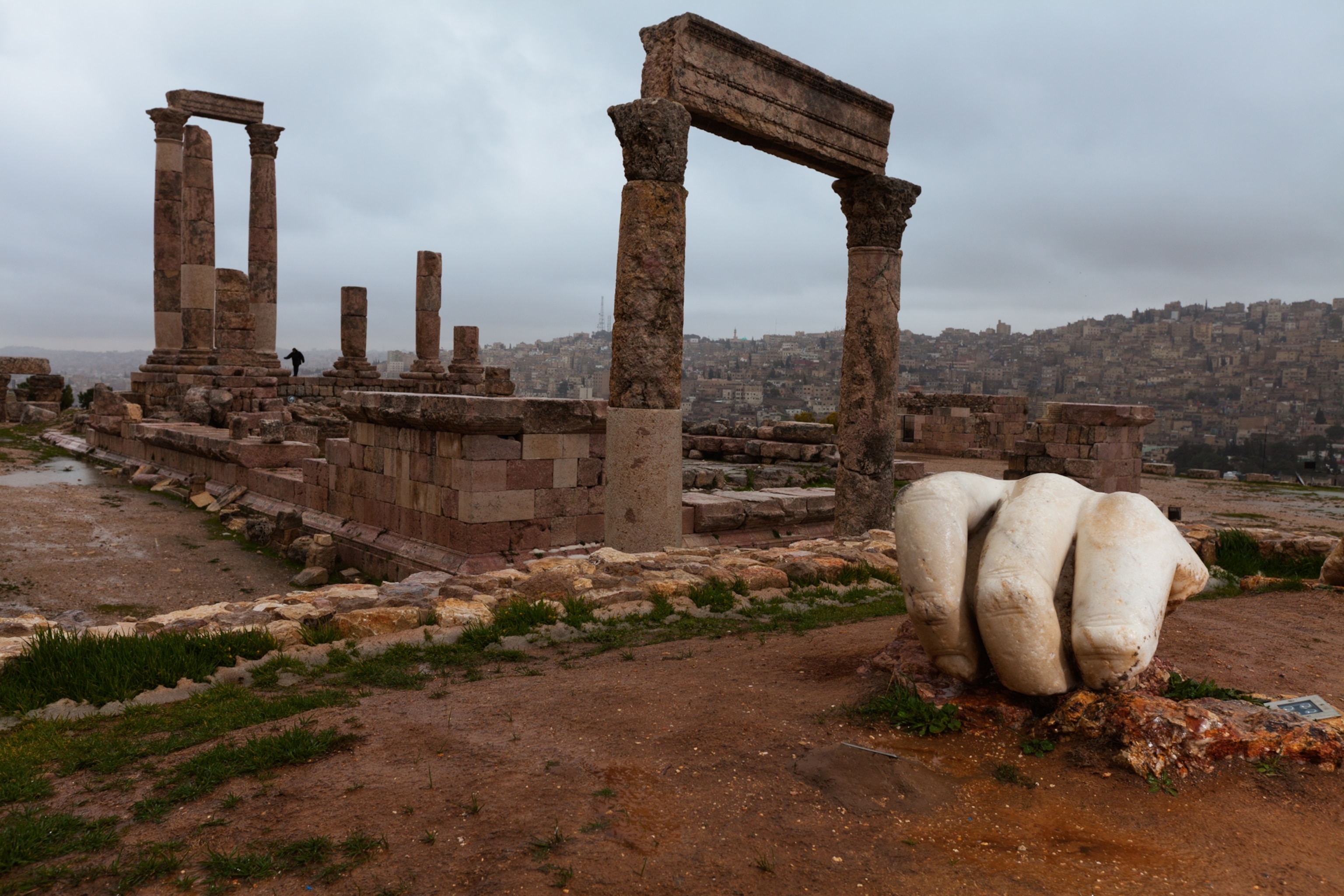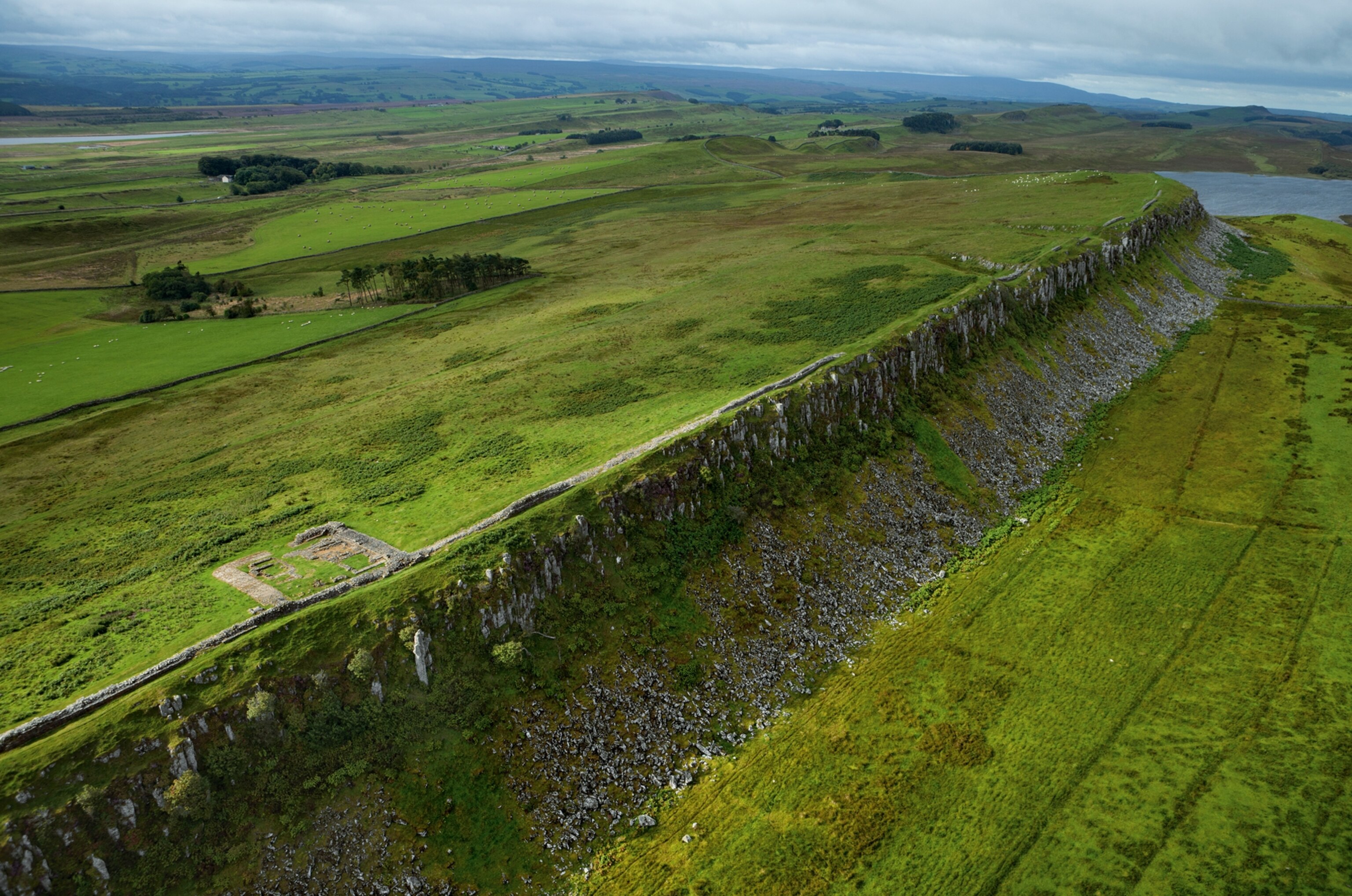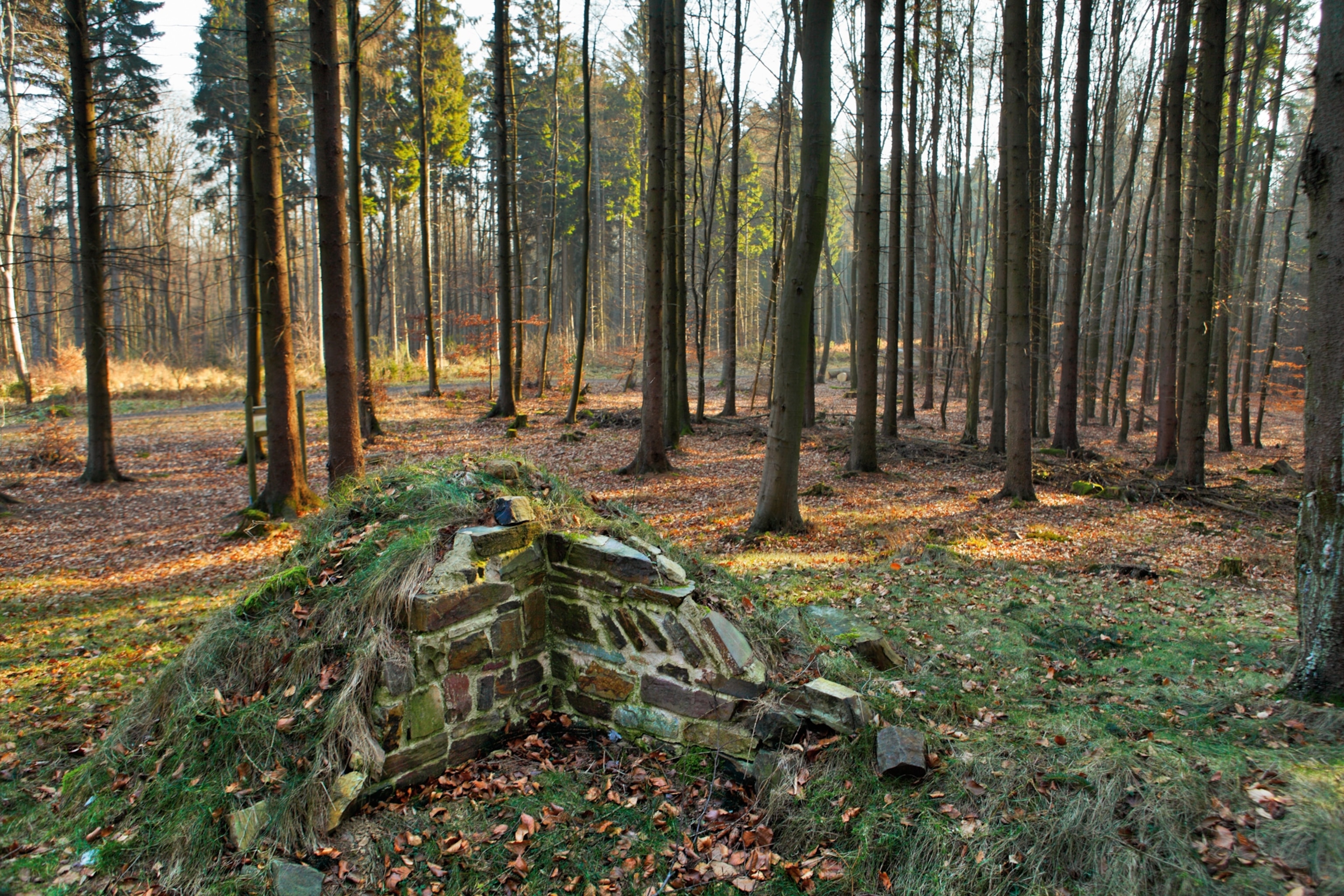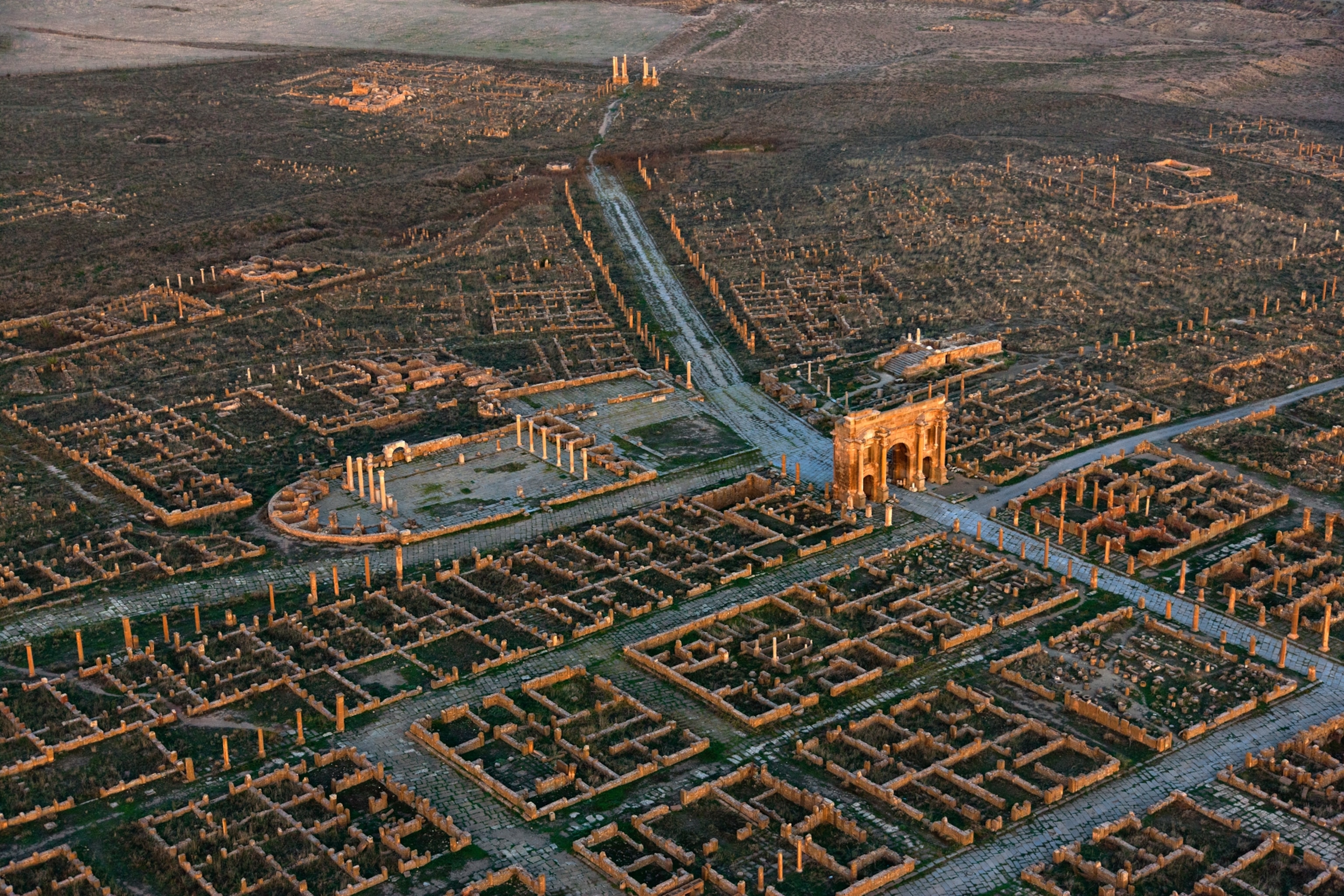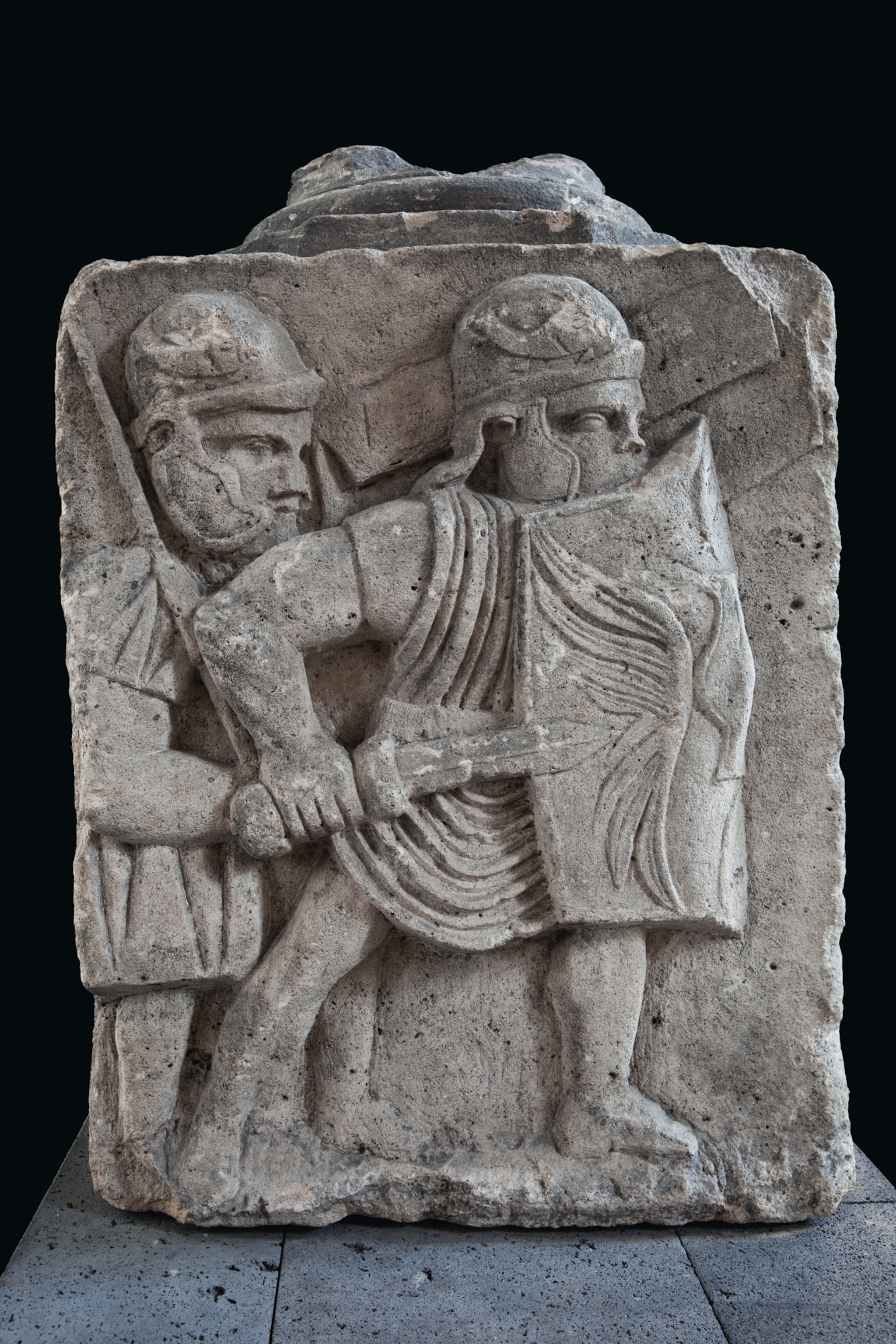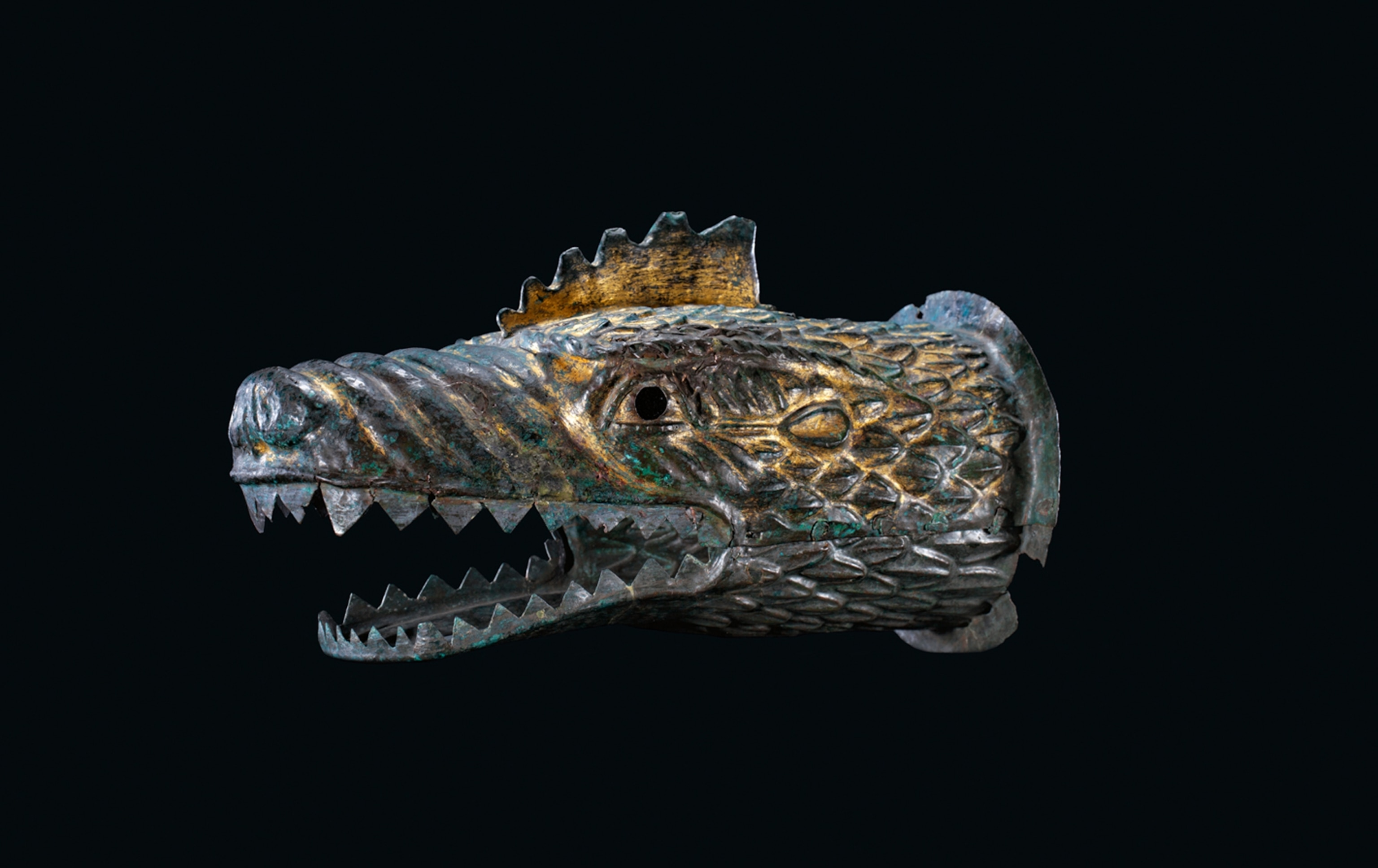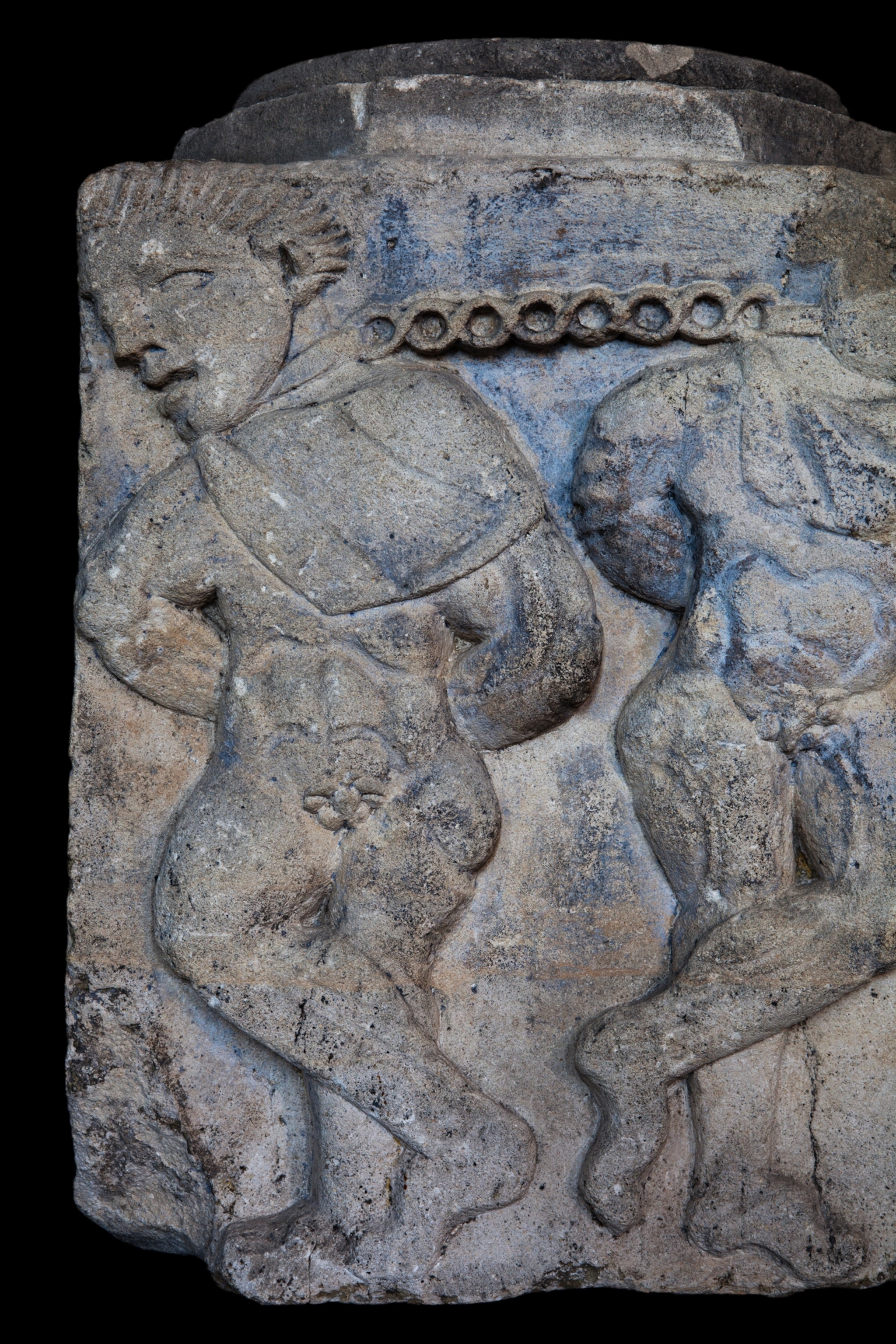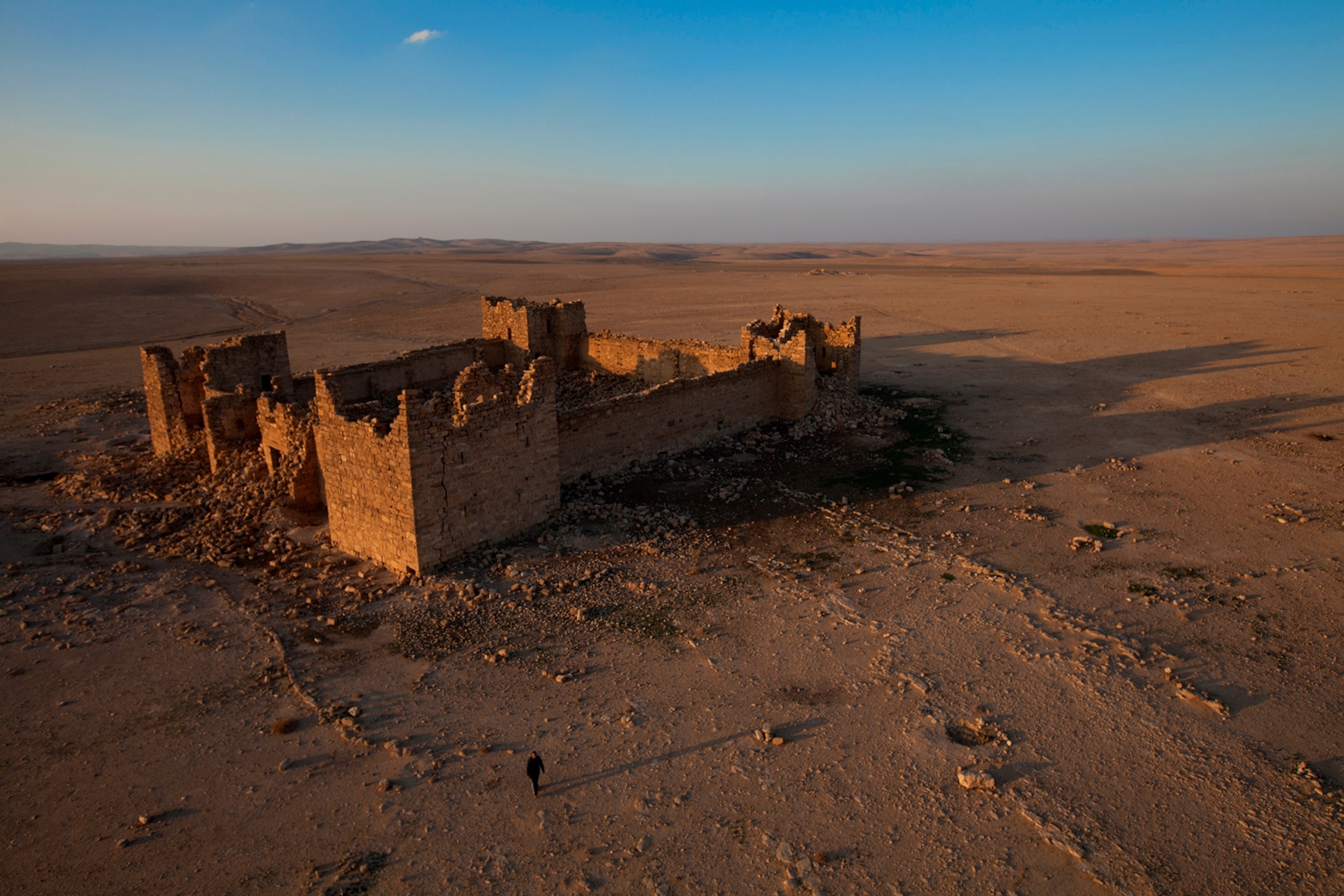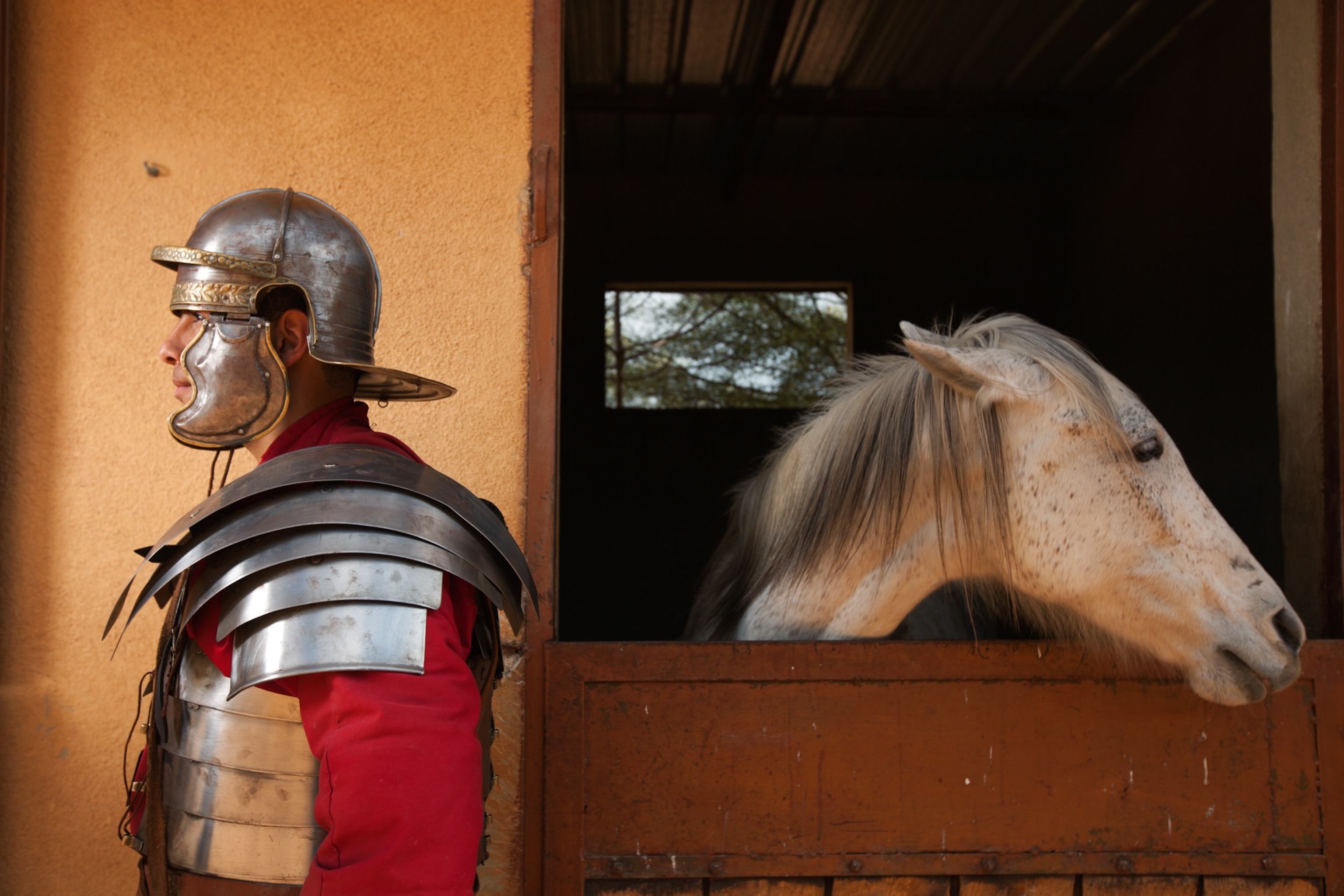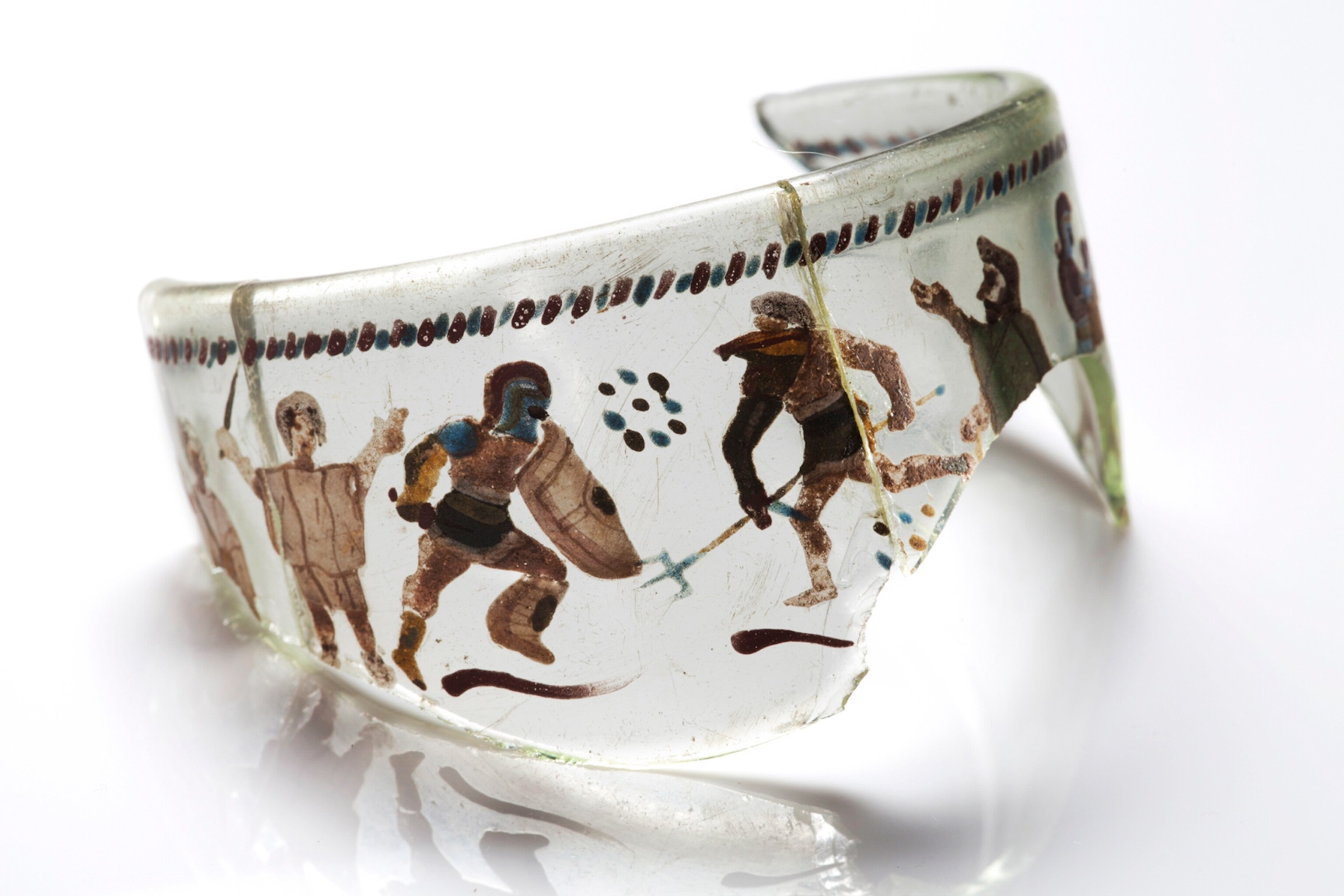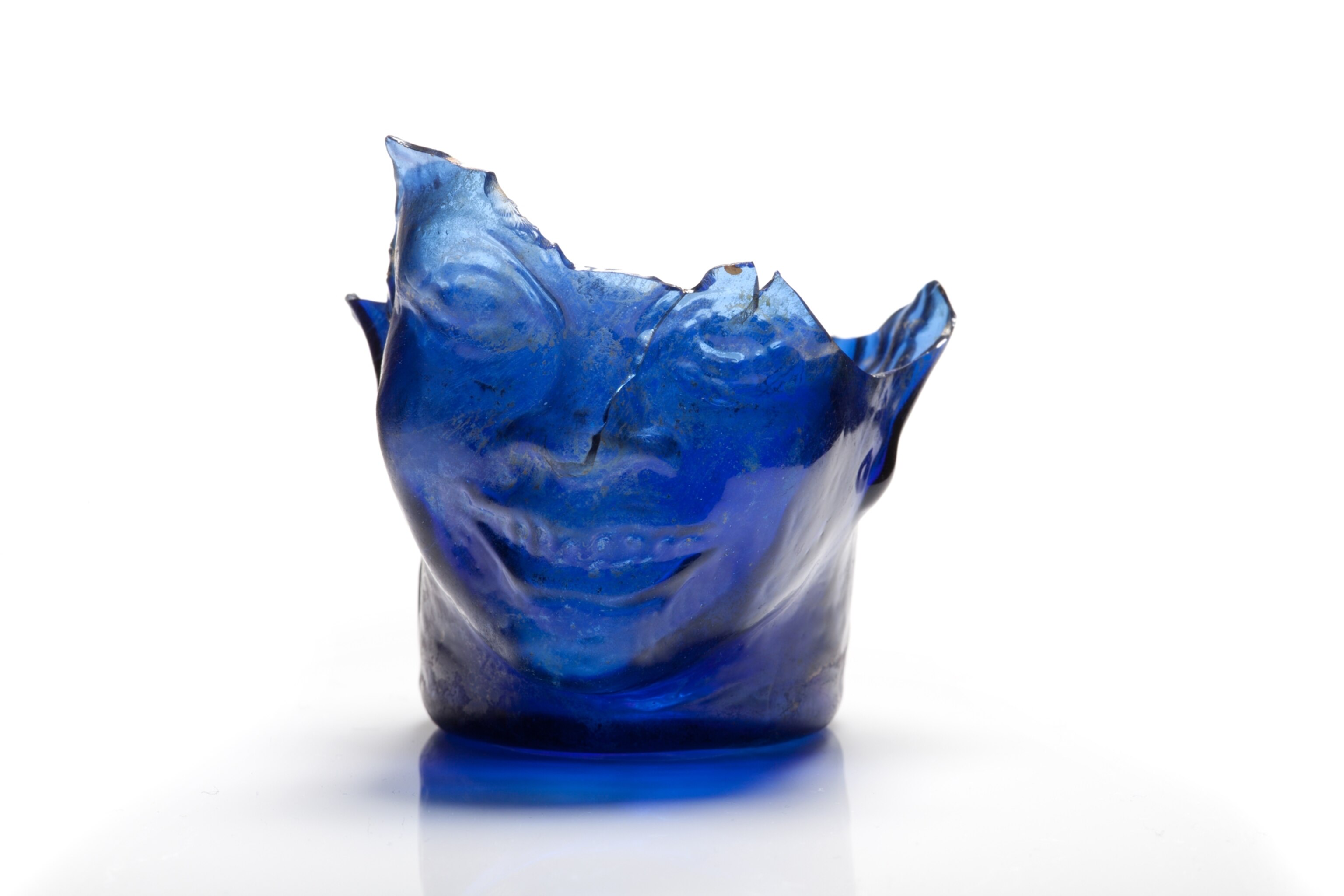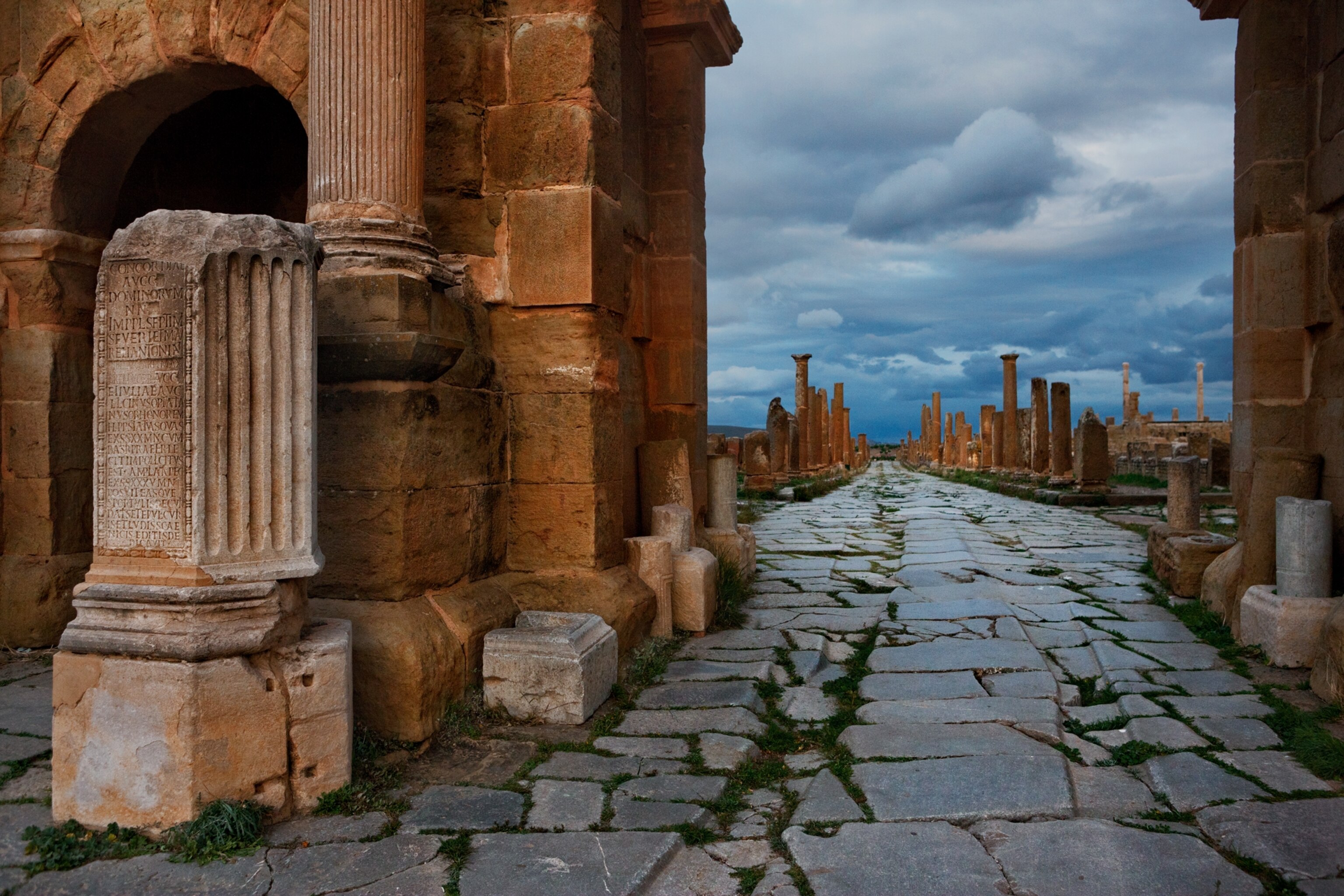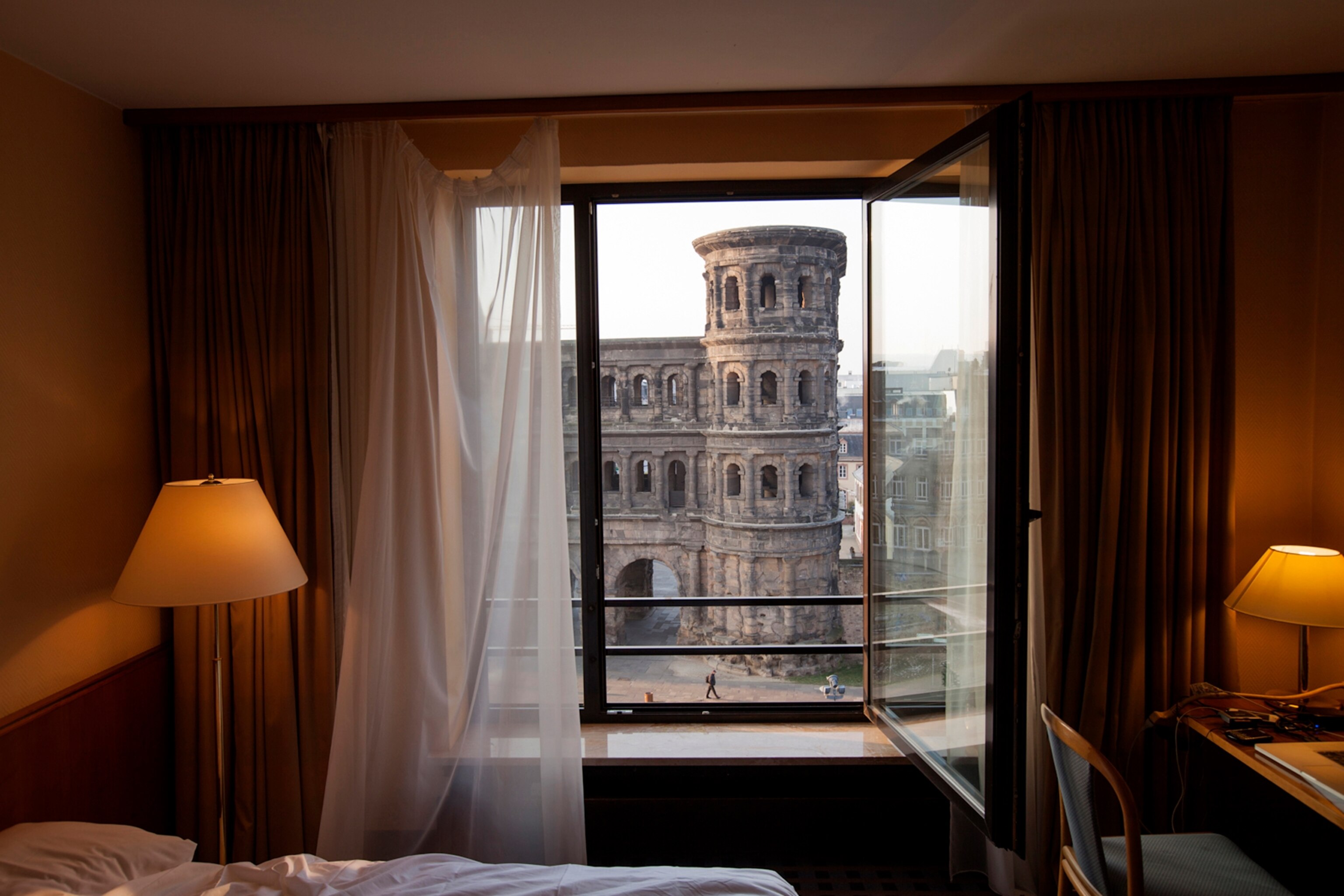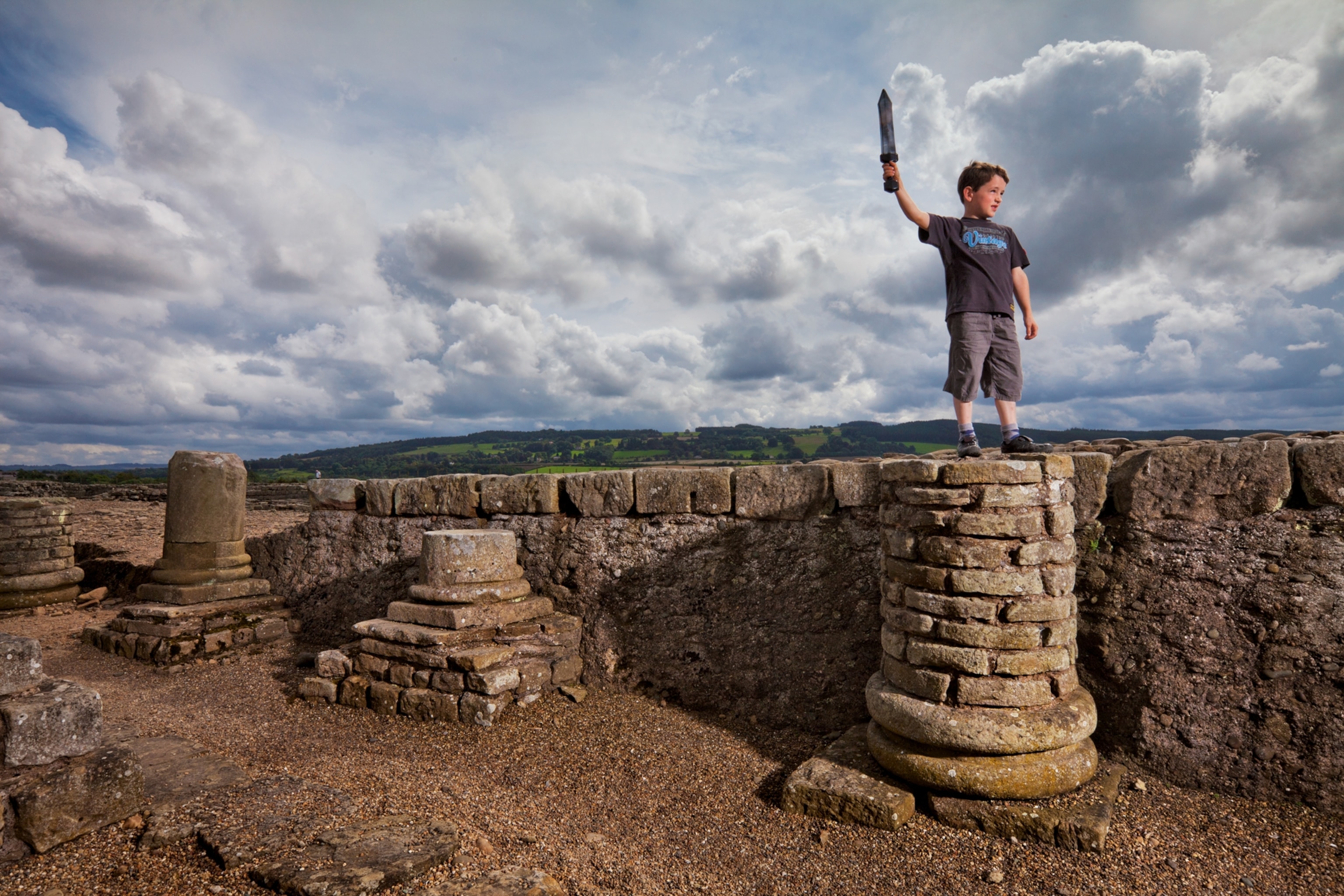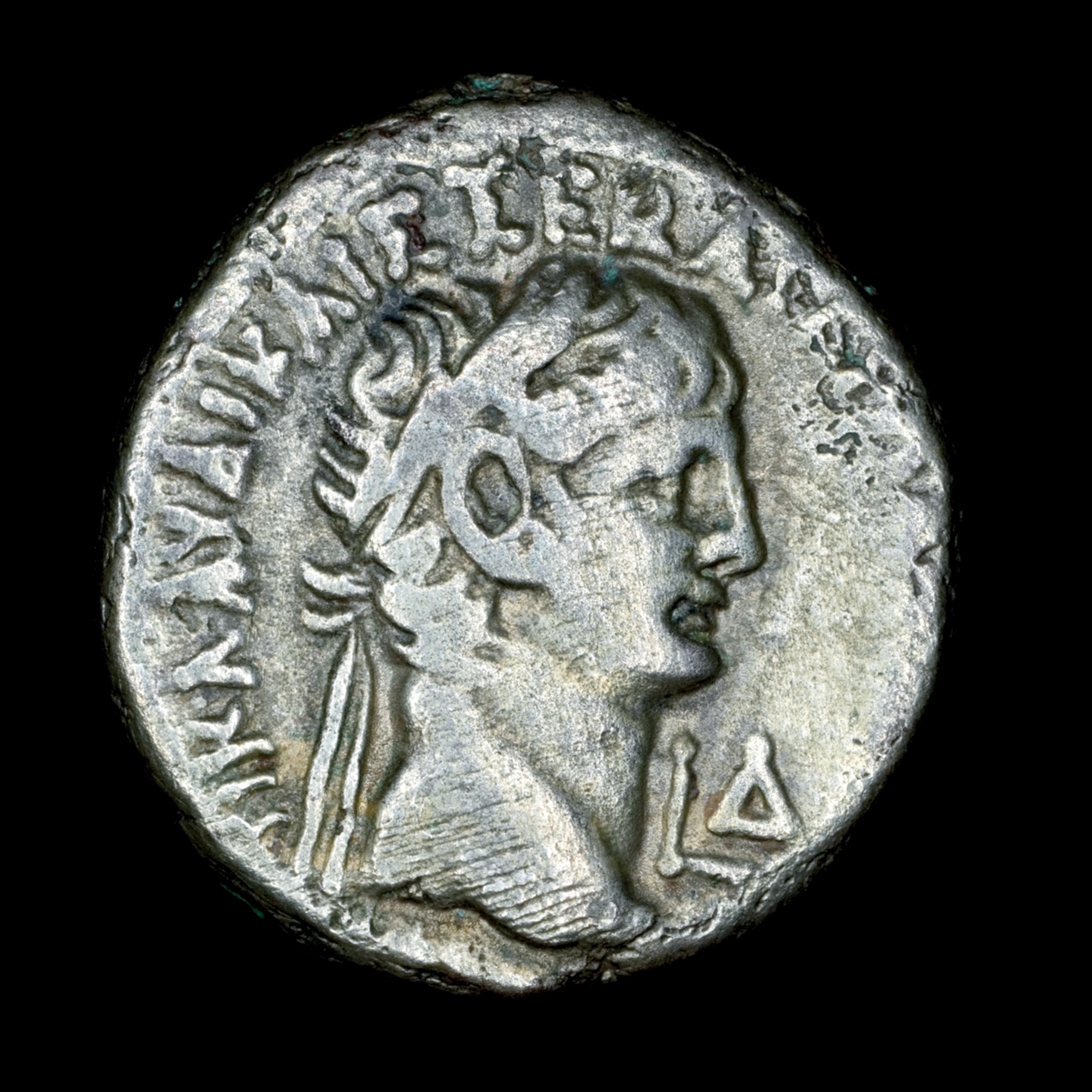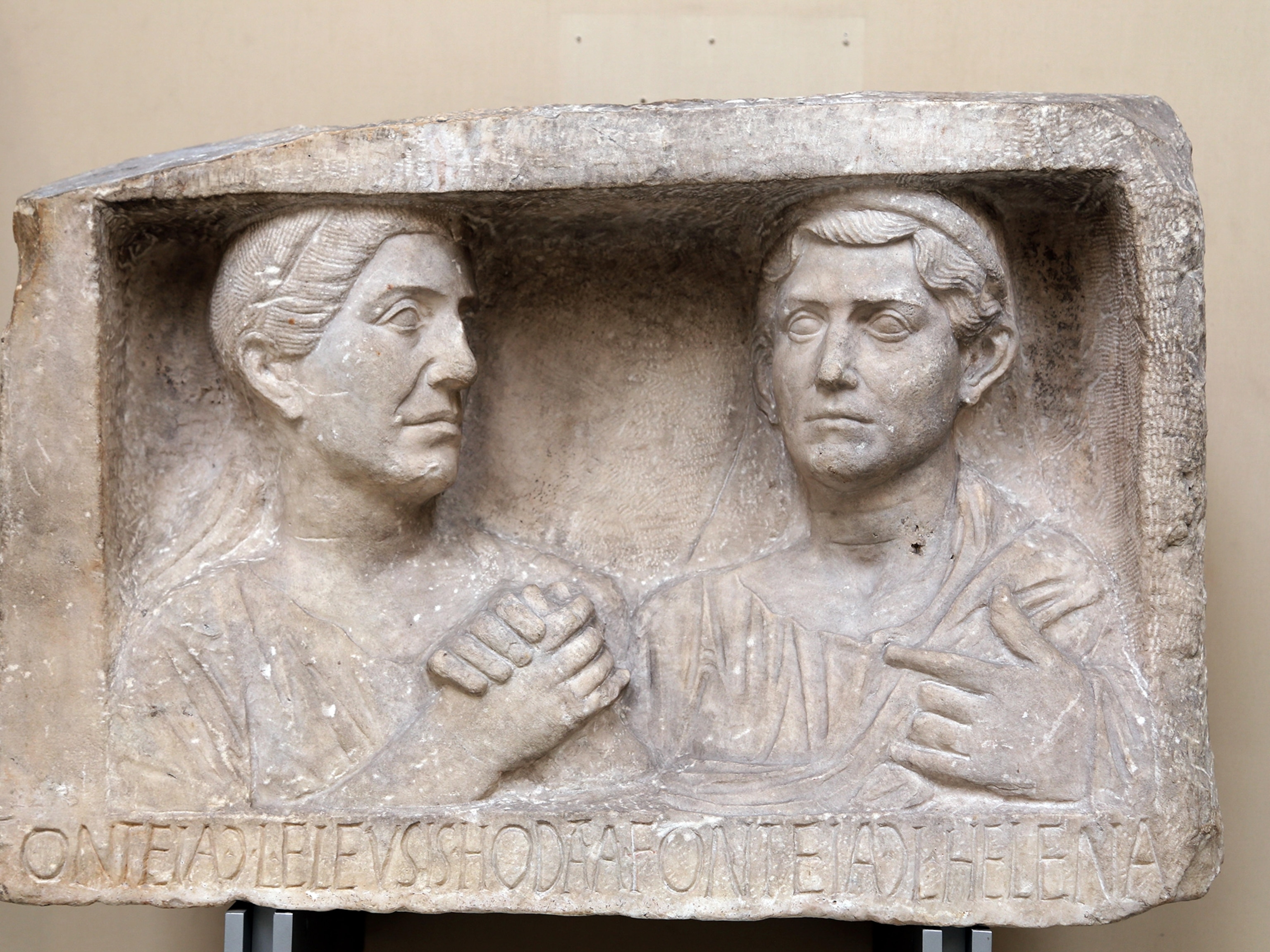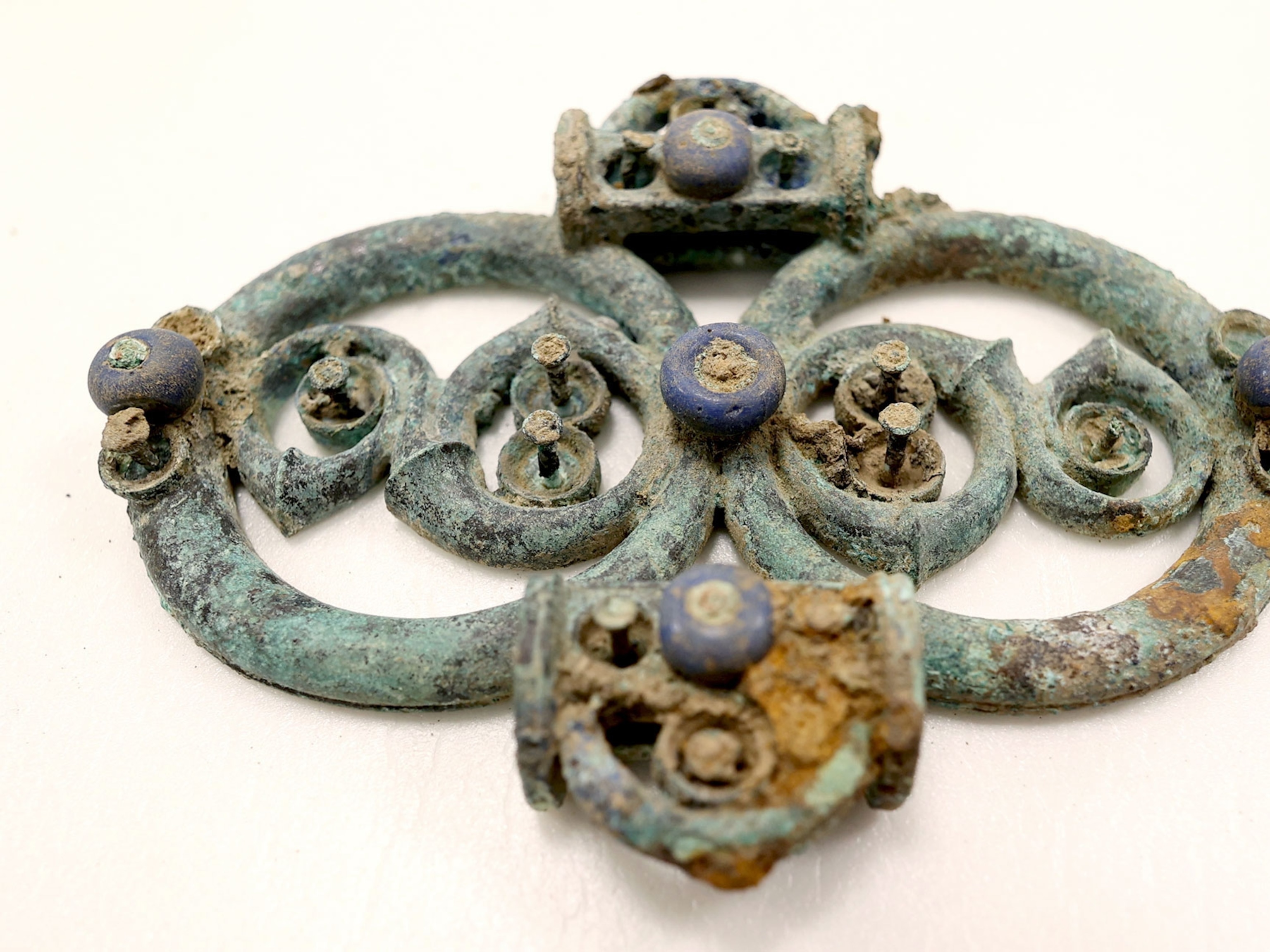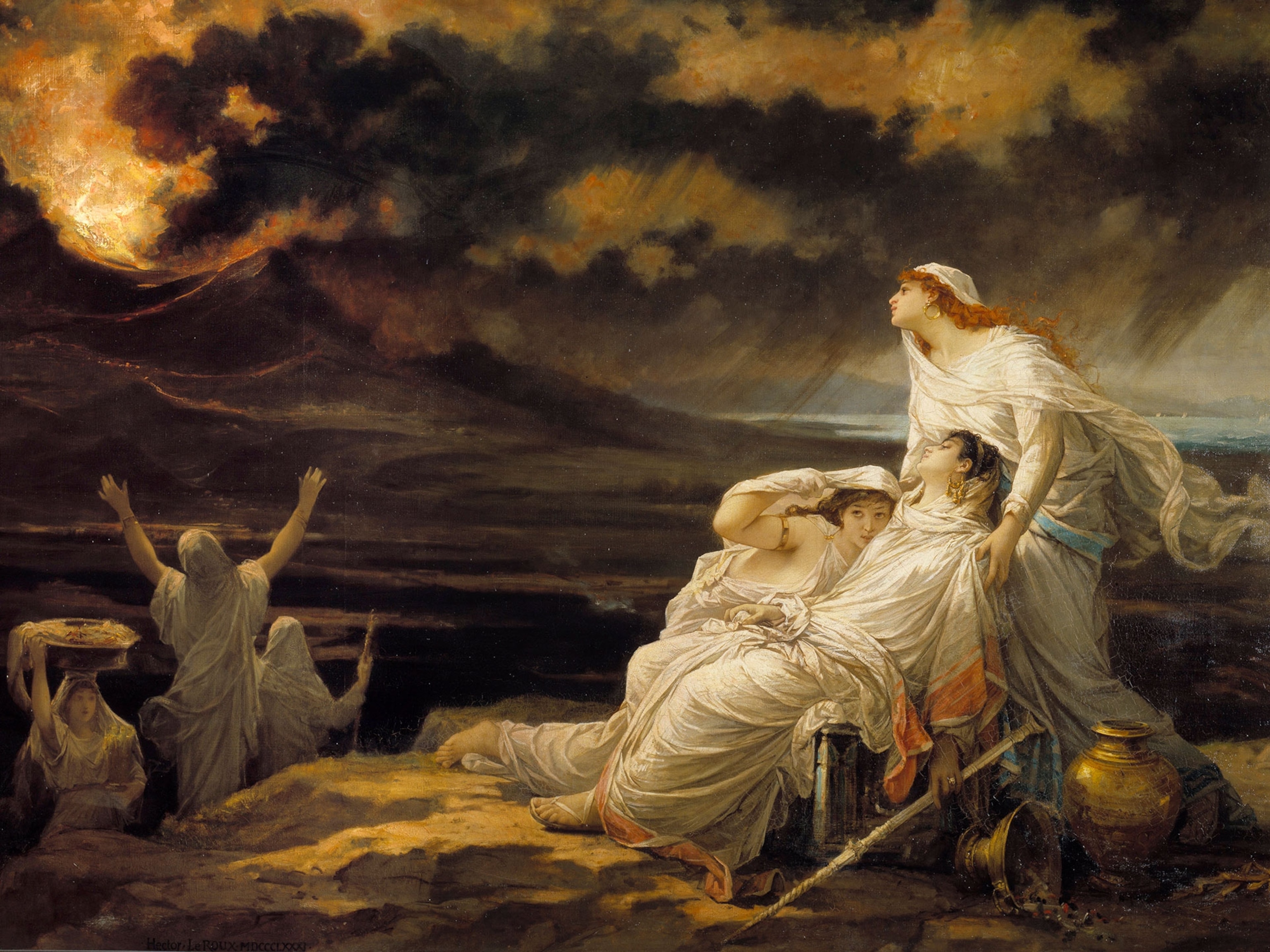Roman Frontiers
Rome’s border walls were the beginning of its end.
Bouncing along a dusty Bavarian logging road, archaeologist Claus-Michael Hüssen keeps his eyes on the tree line to the left, searching for some familiar landmark in the thick forest. Suddenly he pulls the van over and gets out, pausing to pack tobacco into his pipe and consult a 1:50,000-scale survey map.
Head down, pipe in hand, Hüssen—a researcher with the German Archaeological Institute—crosses the road and wades through the thick underbrush. Fifty yards from the road, he nearly misses a low dirt mound about three feet high and six feet across. Littered with flat white stones, it runs in an unnaturally straight line along the forest floor.
Nearly 2,000 years ago this was the line that divided the Roman Empire from the rest of the world. Here in Germany the low mound is all that’s left of a wall that once stood some ten feet tall, running hundreds of miles under the wary eyes of Roman soldiers in watchtowers.
It would have been a shocking sight in the desolate wilderness, 630 miles north of Rome itself. “The wall here was plastered and painted,” Hüssen says. “Everything was square and precise. The Romans had a definite idea of how things should be.” Engineering students measuring another stretch of wall found one 31-mile section that curved just 36 inches.
Hüssen faces north, the Roman Empire at his back. Two hundred yards away, just past a narrow meadow torn up by wild boars and a rushing stream, the next hill rises like a green wall. “Here’s the border,” he says, “and on the other side is a wonderful view of nothing.”
A stunning network of walls, rivers, desert forts, and mountain watchtowers marks Rome’s limits. At its peak in the second century A.D., the empire sent soldiers to patrol a front that stretched from the Irish Sea to the Black Sea as well as across North Africa.
Hadrian’s Wall, in England, probably the best known segment, was named a UNESCO World Heritage site in 1987. In 2005 UNESCO established a combined site with the 342-mile German frontier. Preservation experts hope to add sites in 16 other countries. The international effort may help answer a surprisingly tricky question: Why did the Romans build the walls? To protect a regime besieged by barbarians, or simply to establish the physical edge of the empire?
The question isn’t just academic. Defining and defending borders is a modern obsession too. As politicians have debated building a wall between the United States and Mexico and troops face off across the land-mine-strewn strip of ground between the two Koreas, the realities the Roman emperors faced are still with us. Understanding why the Romans were obsessed with their borders—and the role their obsession played in the decline of the empire—might help us better understand ourselves.
From around 500 B.C., Rome expanded continually for six centuries, transforming itself from a small Italian city-state in a rough neighborhood into the largest empire Europe would ever know.
The emperor Trajan was an eager heir to this tradition of aggression. Between 101 and 117, he fought wars of conquest in present-day Romania, Armenia, Iran, and Iraq, and he brutally suppressed Jewish revolts. Roman coins commemorated his triumphs and conquests.
When he died in 117, his territory stretched from the Persian Gulf to Scotland. He bequeathed the empire to his adopted son—a 41-year-old Spanish senator, self-styled poet, and amateur architect named Publius Aelius Hadrianus. Faced with more territory than Rome could afford to control and under pressure from politicians and generals to follow in the footsteps of his adoptive father, the newly minted emperor—better known as Hadrian—blinked. “The first decision he made was to abandon the new provinces and cut his losses,” says biographer Anthony Birley. “Hadrian was wise to realize his predecessor had bitten off more than he could chew.”
The new emperor’s policies ran up against an army accustomed to attacking and fighting on open ground. Worse, they cut at the core of Rome’s self-image. How could an empire destined to rule the world accept that some territory was out of reach?
Hadrian may simply have recognized that Rome’s insatiable appetite was yielding diminishing returns. The most valuable provinces, like Gaul or Hadrian’s native Spain, were full of cities and farms. But some fights just weren’t worth it. “Possessing the best part of the earth and sea,” the Greek author Appian observed, the Romans have “aimed to preserve their empire by the exercise of prudence, rather than to extend their sway indefinitely over poverty-stricken and profitless tribes of barbarians.”
The army’s respect for Hadrian helped. The former soldier adopted a military-style beard, even in official portraits, a first for a Roman emperor. He spent more than half of his 21-year reign in the provinces and visiting troops on three continents. Huge stretches of territory were evacuated, and the army dug in along new, reduced frontiers. Wherever Hadrian went, walls sprang up. “He was giving a message to expansion-minded members of the empire that there were going to be no more wars of conquest,” Birley says.
By the time the restless emperor died in 138, a network of forts and roads originally intended to supply legions on the march had become a frontier stretching thousands of miles. “An encamped army, like a rampart, encloses the civilized world in a ring, from the settled areas of Aethiopia to the Phasis, and from the Euphrates in the interior to the great outermost island toward the west,” Greek orator Aelius Aristides noted proudly, not long after Hadrian’s death.
That “outermost island” was where Hadrian built the monument that bears his name, a rampart of stone and turf that cut Britain in half. Today Hadrian’s Wall is one of the best preserved, well-documented sections of Rome’s frontier. Remnants of the 73-mile barrier run through salt marshes, across green sheep pastures, and for one bleak stretch not far from downtown Newcastle, alongside a four-lane highway. Miles of it are preserved aboveground, lining crags that rise high above the rain-swept countryside.
More than a century of study has given archaeologists an unparalleled understanding of Hadrian’s Wall. The wall, perhaps designed by Hadrian himself on a visit to Britain in 122, was the ultimate expression of his attempt to define the empire’s limits.
In most places the stone wall was an intimidating 14 feet tall and 10 feet wide. Traces of a 9-foot-deep ditch running the length of the wall are still visible today. In the past few decades excavations have uncovered pits filled with stakes between ditch and wall, one more obstacle for intruders. A dedicated road helped soldiers respond to threats. Regularly spaced gates were supported by watchtowers every third of a mile.
A couple miles behind the wall, a string of forts was evenly spaced half a day’s march apart. Each fort could house between 500 and 1,000 men, capable of responding quickly to any attacks. In 1973 workers digging a drainage ditch at Vindolanda, a typical frontline fort, uncovered piles of Roman trash under a thick layer of clay. The wet layer held everything from 1,900-year-old building timbers to cloth, wooden combs, leather shoes, and dog droppings, all preserved by the oxygen-free conditions.
Digging deeper, excavators came across hundreds of fragile, wafer-thin wooden tablets covered in writing. They provide day-to-day details of life along Hadrian’s Wall: work assignments, duty rosters, supply requests, personal letters. There is even a birthday party invitation from one officer’s wife to another, the earliest surviving example of women’s handwriting in Latin.
The tablets suggest that watching over the “wretched little Britons,” as one Vindolanda writer describes the locals, was no picnic, but the fort wasn’t exactly a hardship post. Some soldiers lived with their families—dozens of children’s shoes, including baby booties, are among the footwear recovered. And the wall’s patrollers ate well: Bacon, ham, venison, chicken, oysters, apples, eggs, honey, Celtic beer, and wine were on the menu. There was even garum, a fermented fish concoction that was the Roman version of Worcestershire sauce. Homesick soldiers received care packages too. “I have sent you ... socks ... two pairs of sandals and two pairs of underpants,” writes one concerned correspondent.
Scholars today ask a key question that must have crossed the minds of Roman soldiers shivering through long watches in the English rain: What were they doing there in the first place? The scale of the wall and its system of ditches, ramparts, and roads suggest that the enemy could be deadly.
Yet reports from Vindolanda hardly portray a garrison under pressure. Aside from a few scattered clues—like the tombstone of luckless centurion Titus Annius, who was “killed in the war”—there are no direct references to fighting anywhere on the British frontier. The big building project to the north isn’t even mentioned. “You get a sense something’s up. Colossal amounts of supplies are being ordered,” says Andrew Birley, director of excavations at Vindolanda and Hadrian biographer Anthony Birley’s nephew. “But they don’t refer to the wall itself.”
If the walls weren’t under constant threat, what were they for? By bringing the sheer scope of the Roman frontier into focus, the effort to create a multinational UNESCO heritage site may help answer the question. Ever since British antiquarians organized the first scientific excavations along Hadrian’s Wall in the 1890s, historians and archaeologists have assumed Rome’s walls were military fortifications, designed to fend off barbarian armies and hostile invaders.
For decades arguments focused on tactical details: Did soldiers stand along the wall to rain spears and arrows down on invaders or sally forth to engage the enemy in the field? The trenches of WWI—and the deadly back-and-forth battling of WWII—did little to change the prevailing view of the ancient frontier as a fixed barrier separating Rome from hordes of hostile barbarians.
Archaeologists studying the frontiers in the 1970s and ’80s later found that the Iron Curtain dividing Europe had shadowed their view of the distant past. “We had in Germany this massive border, which seemed impenetrable,” says C. Sebastian Sommer, chief archaeologist at the Bavarian State Preservation Office. “The idea was here and there, friend and foe.”
Today a new generation of archaeologists is taking another look. The dramatic, unbroken line of Hadrian’s Wall may be a red herring, a 73-mile exception that proves an entirely different rule. In Europe the Romans took advantage of the natural barriers created by the Rhine and Danube Rivers, patrolling their waters with a strong river navy. In North Africa and the eastern provinces of Syria, Judaea, and Arabia, the desert itself created a natural frontier.
Military bases were often ad hoc installations set up to watch rivers and other key supply routes. The Latin word for frontier, limes (LEE-mess), originally meant a patrolled road or path. We still use the term: Our “limits” comes from limites, the plural of limes.
Outposts on rivers like the Rhine and Danube or in the deserts on Rome’s eastern and southern flanks often resemble police or border patrol stations. They would have been useless against an invading army but highly effective for soldiers nabbing smugglers, chasing small groups of bandits, or perhaps collecting customs fees. The thinly manned walls in England and Germany were similar. “The lines were there for practical purposes,” says Benjamin Isaac, a historian at Tel Aviv University. “They were the equivalent of modern barbed wire—to keep individuals or small groups out.”
Isaac argues that the frontiers resembled certain modern installations more than thick-walled medieval fortresses: “Look at what Israel’s building to wall off the West Bank. It’s not meant to keep out the Iranian army, it’s made to stop people from exploding themselves on buses in Tel Aviv.” Warding off terrorists may not have motivated the Romans, but there were plenty of other factors— as there are today. “What the United States is planning between itself and Mexico is substantial,” says Isaac, “and that’s just to keep out people who want to sweep the streets in New York.”
More archaeologists are endorsing that view. “Isaac’s analysis has come to dominate the field,” says David Breeze, author of the recent Frontiers of Imperial Rome. “Built frontiers aren’t necessarily about stopping armies but about controlling the movement of people.” The Roman frontier, in other words, is better seen not as an impervious barrier sealing Fortress Rome off from the world but as one tool the Romans used to extend influence deep into barbaricum, their term for everything outside the empire, through trade and occasional raids.
For centuries emperors used a mix of threats, deterrence, and outright bribery to secure peace. Rome negotiated constantly with tribes and kingdoms outside its frontier. Diplomacy created a buffer zone of client kings and loyal chieftains to insulate the border from hostile tribes farther afield. Favored tribes earned the right to cross the frontier at will; others could bring their goods to Roman markets only under armed guard.
Loyal allies were also rewarded with gifts, weapons, and military assistance and training. Friendly barbarians sometimes served in the Roman army; after 25 years, they retired as Roman citizens, free to settle anywhere in the empire. Vindolanda alone was home to units recruited from what are now northern Spain, France, Belgium, and the Netherlands. Iraqi bargemen once sailed England’s rivers under the banner of Rome, and Syrian archers watched over the bleak countryside.
Trade was also a foreign policy tool: The Roman-Germanic Commission in Frankfurt, part of the German Archaeological Institute, has a database of more than 10,000 Roman artifacts found beyond the limes. Weapons, coins, and goods like glass and pottery show up as far away as Norway and modern-day Russia.
Roman foreign policy wasn’t all carrots. Revenge was also a favorite tactic, and the legions were eager to take the fight beyond the frontier.
They spent seven years avenging one disastrous defeat suffered in A.D. 9 in Germany. The historian Tacitus explains that when victorious on the battlefield, General Germanicus “took his helmet off his head and begged his men to follow up the slaughter, as they wanted not prisoners, and the utter destruction of the nation would be the only conclusion of the war.”
Hadrian lashed out at troublesome populations too. In 132 he suppressed a Jewish revolt in a ruthless, protracted campaign. One Roman historian claimed the fighting left half a million Jews dead and added, “As for the numbers who perished from starvation, disease, or fire, that was impossible to establish.” Survivors were enslaved or expelled. The name of the province was changed from Judaea to Syria-Palaestina to wipe away all traces of the rebellion.
Word of such brutality surely made Rome’s enemies think twice before crossing the line. To the Romans, slaughter and genocide were an important part of keeping the empire secure. “The Pax Romana isn’t simply won after a series of battles,” says Newcastle University archaeologist Ian Haynes. “Rather, it’s asserted over and over in brutal ways.”
Just as Hadrian’s Wall shows the Roman frontier at its strongest, an abandoned fortress on the Euphrates River vividly captures the moment the borders began to collapse. Dura-Europos was a fortified city on the frontier between Rome and Persia, its greatest rival. Today Dura sits about 25 miles from the Syrian border with Iraq, an eight-hour bus ride through the desert from Damascus. It first came to light in 1920, when British troops fighting Arab insurgents accidentally uncovered the painted wall of a Roman temple. A team from Yale University and the French Academy put hundreds of Bedouin tribesmen to work with shovels and picks, moving tens of thousands of tons of sand with the help of railcars and mine carts. “At times it was like the Well of Souls scene from Indiana Jones,” says University of Leicester archaeologist Simon James.
Ten years of frenzied digging uncovered a third-century Roman city frozen in time. Fragments of plaster still cling to mud-brick and stone walls, and the rooms of palaces and temples—including the world’s oldest known Christian church—are tall enough to walk through and imagine what they looked like when they had roofs.
Founded by Greeks around 300 B.C., Dura was conquered by the Romans nearly 500 years later. Its tall, thick walls and perch above the Euphrates made it a perfect frontier outpost. The northern end was walled off and turned into a Roman-era “green zone” with barracks, an imposing headquarters for the garrison commander, a redbrick bathhouse big enough to wash the dust off a thousand soldiers, the empire’s easternmost known amphitheater, and a 60-room palace suitable for dignitaries “roughing it” in the hinterlands.
Duty rosters show at least seven outposts reported to Dura. One of the outposts was staffed by just three soldiers; another lay nearly a hundred miles downstream. “This was not a city under constant threat,” James told me when I visited, before the political situation in Syria deteriorated and made excavation impossible. We sat amid the ruins and watched orange gas flares from Iraqi oil wells flicker on the horizon. “Soldiers here were probably busier policing the locals than defending against raids and attacks.”
The quiet didn’t last. Persia emerged as a major threat along the empire’s eastern border a half century after the Romans seized Dura. Beginning in 230, war between the rivals raged across Mesopotamia. It was soon clear the frontier strategy that had served Rome for more than a century was no match for a determined, sizable foe.
Dura’s turn came in 256. Working with a Franco-Syrian team of archaeologists interested in the site’s pre-Roman history, James has spent ten years unraveling the walled city’s final moments. He says the Romans must have known an attack was imminent. They had time to reinforce the massive western wall, burying part of the city—including the church and a magnificently decorated synagogue—to form a sloping rampart.
The Persian army set up camp in the city cemetery, a few hundred yards from Dura’s main gate. As catapults lobbed stones at the Romans, the Persians built an assault ramp and dug beneath the city, hoping to collapse its defenses. Dura’s garrison struck back with tunnels of their own.
As fighting raged on the surface, James says, a squad of 19 Romans broke through into a Persian tunnel. A cloud of poison gas, pumped into the underground chamber, suffocated them almost instantly. Their remains are some of the oldest archaeological evidence of chemical warfare. James believes the bodies, found 1,700 years later, stacked in a tight tunnel, were used to block the tunnel while the Persians set it on fire.
The Persians failed to topple Dura’s wall but eventually succeeded in taking the city, which was later abandoned to the desert. Surviving defenders were slain or enslaved. Persian armies pushed deep into what had been Rome’s eastern provinces, sacked dozens of cities, and overpowered two emperors before capturing a third, the hapless Valerian, in 260. The Persian king, Shapur, reportedly used Valerian as a footstool for a while, then had him flayed and nailed his skin to a wall.
The crisis was a turning point. Around the time Dura fell, the careful balance of offense, defense, and sheer intimidation along the frontier fell apart.
For nearly 150 years the border had helped Rome ignore a painful reality: The world beyond the walls was catching up, in part thanks to the Romans themselves. Barbarians who served in the Roman army brought back Roman knowledge, weapons, and military strategy, says Michael Meyer, an archaeologist at Berlin’s Free University.
While Rome looked the other way, barbarian tribes grew bigger and more aggressive and coordinated. When troops were pulled from across the empire to beat back the Persians, weak points in Germany and Romania came under attack almost immediately.
Hadrian’s legacy was doomed. “The tragic point of their strategy is that the Romans concentrated military force at the frontier,” Meyer says. “When the Germans attacked the frontier and got in behind the Roman troops, the whole Roman territory was open.” Think of the empire as a cell, and barbarian armies as viruses: Once the empire’s thin outer membrane was breached, invaders had free rein to pillage the interior.
The inscription on a five-foot-tall altar uncovered in Augsburg by German workers in 1992 is a sort of epitaph for Hadrian’s grand idea, noting that on April 24 and 25,A.D. 260, Roman soldiers clashed with barbarians from beyond the German frontier. The Romans prevailed—barely.
Their commander set up an altar to Victory. Reading between the lines reveals a different picture: The barbarians had been raiding deep into Italy for months and were heading home with thousands of Roman captives. “It shows the border is already collapsing,” says the German Archaeological Institute’s Hüssen.
The empire would never be safe inside its shell again. Pressures on the frontiers finally became too great. Cities across the empire began building their own walls; the emperors scrambled to fight off regular invasions. The costs and chaos were crippling. Within two centuries an empire that once dominated an expanse larger than today’s European Union was gone.

